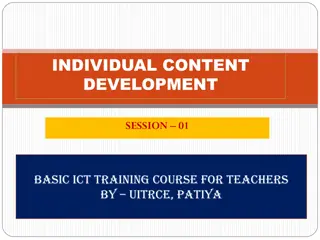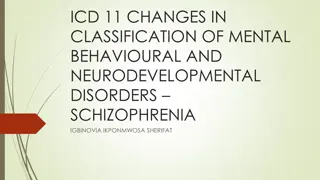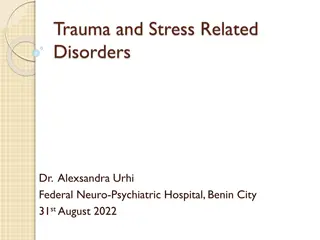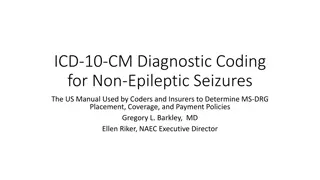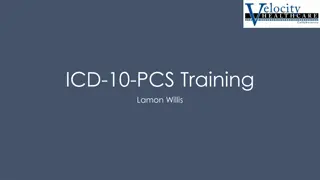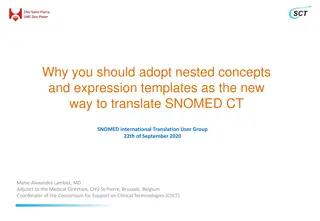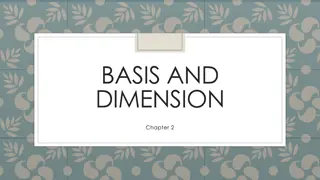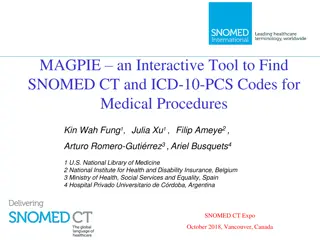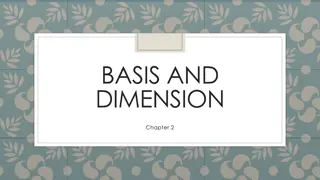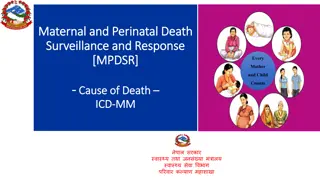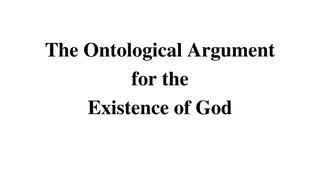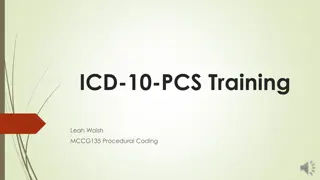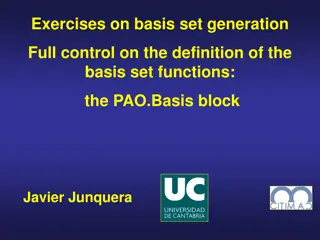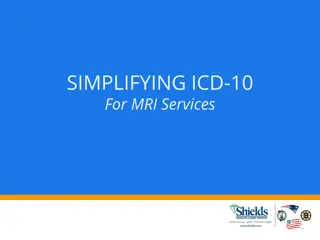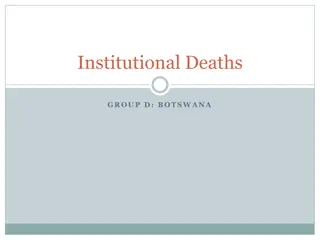Ontological Basis in ICD-11 and SNOMED CT Harmonization
This study explores the alignment and harmonization of the ontology between ICD-11 and SNOMED CT, emphasizing the importance of a common ontological foundation for optimal interoperability in healthcare data coding and terminology. The collaboration aims to merge clinical terminologies to enhance plausibility and ontological soundness in medical classification systems.
Download Presentation

Please find below an Image/Link to download the presentation.
The content on the website is provided AS IS for your information and personal use only. It may not be sold, licensed, or shared on other websites without obtaining consent from the author.If you encounter any issues during the download, it is possible that the publisher has removed the file from their server.
You are allowed to download the files provided on this website for personal or commercial use, subject to the condition that they are used lawfully. All files are the property of their respective owners.
The content on the website is provided AS IS for your information and personal use only. It may not be sold, licensed, or shared on other websites without obtaining consent from the author.
E N D
Presentation Transcript
The Common Ontology between ICD 11 and SNOMED CT medical plausibility vs. ontological soundness Stefan Schulz Medical University of Graz stefan.schulz@medunigraz.at http://purl.org/steschu
ICD-11 SNOMED CT harmonization Background: ICD: Classification maintained by WHO, currently under revision ICD-11 SNOMED CT: Ontology-based clinical terminology maintained by IHTSDO (International Health Terminology Standards Development Organisation) Large content overlap between ICD and SNOMED CT disorder / findings hierarchy Joint Advisory Group (WHO and IHTSDO), based on institutional agreement: Synergistic and not antagonistic terminology development Jointly develop a common ontological basis for both ICD-11 and SNOMED CT Maximum of interoperability between ICD and SNOMED coded data
ICD-11 Foundation Common SNOMED ICD- 11 Ontology Subset of SNOMED CT ICD-11 ICD-11 Content Model Foundation Ontology Content Model Contents Content Model Schema Foundatio Common SNOMED ICD-11 Ontology Subset of ICD-11 value sets External sources External External External links sources Sources Query Library Linearization B (un-nested) Linearization C (un-nested) Linearization A Linearization set A (nested)
Categorization and formal description of domain entities: clinical situations, information entities, taxonomies, partonomies Inventory of clinicians language: words, terms, phrases Purpose-specific reporting units: billing, health statistics
Ontology SNOMED CT Categorization and formal description of domain entities: clinical situations, information entities, taxonomies, partonomies Vocabulary SNOMED CT Inventory of clinicians language: words, terms, phrases ICD-11 Classification Purpose-specific reporting units: billing, health statistics, research, ICD-11
Ontology SNOMED CT Categorization and formal description of domain entities: clinical situations, information entities, taxonomies, partonomies Vocabulary SNOMED CT Inventory of clinicians language: words, terms, phrases ICD-11 Desiderata: context- independent, precise categorizations Classification Desiderata: Ready- to-use terms, one- click encoding of complex statements Purpose-specific reporting units: billing, health statistics, research, ICD-11 Desiderata: pragmatic orderings for specific purposes
SNOMED CT Findings/Disorders and WHO IHTSDO Common Ontology Fracture of Radius Fracture of Ulna Formal taxonomies of clinical situations (life periods in which one or more clinical conditions are present) Fracture of radius and ulna ICD-11 Linearizations Fracture of forearm Fracture of shaft of ulna Hierarchical orderings of reporting units into disjoint classes Fracture of shaft of radius Fracture of shafts of both ulna and radius
SNOMED CT Findings/Disorders and WHO IHTSDO Common Ontology Multiple hierarchies: Mitral valve disease Rheumatic heart disease Formal taxonomies of clinical situations (life periods in which one or more clinical conditions are present) Rheumatic mitral valve stenosis ICD-11 Single hierarchies + exclusions Linearizations Mitral valve disease Rheumatic heart disease Hierarchical orderings of reporting units into disjoint classes Excl: Heart valve diseases Rheumatic mitral valve stenosis
SNOMED CT Findings/Disorders and WHO IHTSDO Common Ontology Strict taxonomic relations Fibrosis of the skin Disorder of skin of lower limb Formal taxonomies of clinical situations (life periods in which one or more clinical conditions are present) Lipodermatosclerosis ICD-11 Approximate taxonomies Linearizations Chronic peripheral venous insufficiency Hierarchical orderings of reporting units into disjoint classes Lipodermatosclerosis
SNOMED CT Findings/Disorders and WHO IHTSDO Common Ontology Separation Ontology/ Epistemology Tuberculosis Confirmed present Formal taxonomies of clinical situations (life periods in which one or more clinical conditions are present) Tuberculosis of respiratory system Fusion Ontology/ Epistemology ICD-11 Linearizations Tuberculosis of the respiratory system Hierarchical orderings of reporting units into disjoint classes Respiratory tuberculosis, confirmed Respiratory tuberculosis, suspected
SNOMED CT Findings/Disorders and WHO IHTSDO Common Ontology B A Formal taxonomies of clinical situations (life periods in which one or more clinical conditions are present) C Mapping as Querying Query mechanism, e.g. X = select A minus select B Y = select A and B Z = select A and (rel C) ICD-11 Linearizations Hierarchical orderings of reporting units into disjoint classes Y X Z
ICD-11 Foundation Common SNOMED ICD- 11 Ontology Subset of SNOMED CT ICD-11 ICD-11 Content Model Foundation Ontology Content Model Contents Content Model Schema Foundatio Common SNOMED ICD-11 Ontology Subset of ICD-11 value sets External sources External External External links sources Sources Query Library Linearization B (un-nested) Linearization C (un-nested) Linearization A Linearization set A (nested)


